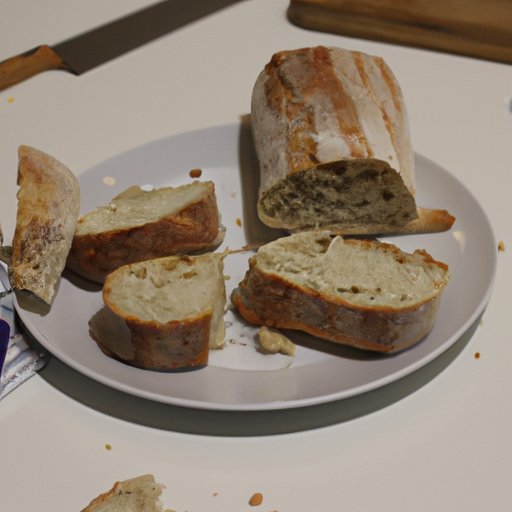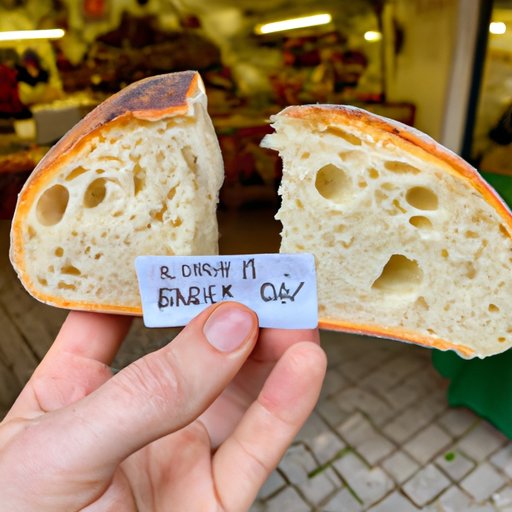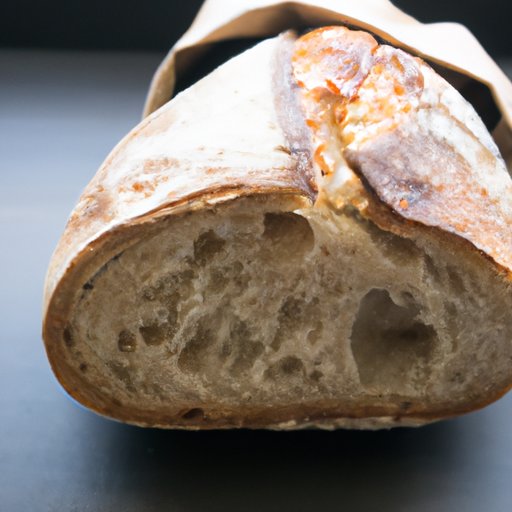Introduction
Italian bread is a type of bread found in many countries around the world, including Italy, the United States, and Canada. It comes in both white and whole-grain varieties, and is often used as an accompaniment to soups and salads, or as the main component of sandwiches. But what exactly makes Italian bread so special, and is it actually healthy? In this article, we’ll explore the nutritional benefits of Italian bread and provide tips on making healthy choices when eating it.

How to Make Healthy Choices When Eating Italian Bread
When it comes to choosing a healthy Italian bread option, there are a few important factors to consider. The first step is to identify whole-grain options, since these tend to be higher in fiber and other nutrients than white bread. Look for labels that say “whole grain” or “whole wheat” to ensure you’re getting the most nutritional bang for your buck.
Next, pay attention to serving sizes. Many Italian breads come in larger loaves, which can contain multiple servings. If you’re trying to watch your calorie intake, be sure to measure out the appropriate portion size. Additionally, examine additional ingredients that may be added to the bread, such as oil, sugar, and preservatives, as these can add extra calories and unhealthy fats.
Is Italian Bread a Good Source of Fiber?
Dietary fiber is an important nutrient that helps regulate digestion and promote heart health. The recommended daily intake for adults is 25 to 30 grams per day. So how does Italian bread stack up in terms of fiber content?
White Italian bread typically contains very little fiber, with one slice containing 1 to 2 grams. Whole wheat Italian bread, on the other hand, contains significantly more fiber, with one slice containing 3 to 4 grams. While this is still lower than some other types of bread, it can still be a good source of fiber if consumed in moderation.

The Pros and Cons of Eating Italian Bread
When it comes to the pros and cons of Italian bread, there are both benefits and drawbacks to consider. On the plus side, Italian bread provides a variety of options, from white to whole-grain, and has a flavorful taste that pairs well with many dishes. Plus, it’s easy to find in most grocery stores. However, there are also some drawbacks to consider. Italian bread is high in calories and sodium, and low in fiber, so it should be consumed in moderation.
Comparing Italian Bread to Other Types of Breads for Health Benefits
When it comes to selecting a healthy bread option, Italian bread isn’t the only option available. Rye bread, whole wheat bread, and sourdough bread all offer unique health benefits that may be more suitable for certain diets. For example, rye bread is high in fiber and low in calories, while whole wheat bread is a good source of protein and vitamins. Sourdough bread, on the other hand, is easier to digest than other types of bread due to its fermented nature.
Conclusion
Italian bread can certainly be a part of a healthy diet, as long as it’s consumed in moderation. Choose a whole-grain option and pay attention to serving sizes to get the most nutritional benefit. Additionally, compare Italian bread to other types of breads to ensure you’re getting the best option for your dietary needs. With careful consideration, Italian bread can be a tasty addition to any meal.
In conclusion, Italian bread can be a healthy option depending on the type and amount consumed. Whole-grain options are higher in fiber and other nutrients than white bread, and understanding serving sizes is key to making healthy choices. Finally, comparing Italian bread to other types of breads can help ensure you’re getting the best option for your dietary needs.
(Note: Is this article not meeting your expectations? Do you have knowledge or insights to share? Unlock new opportunities and expand your reach by joining our authors team. Click Registration to join us and share your expertise with our readers.)
